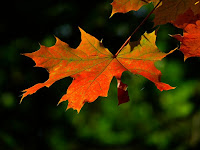Consider planting those spring-flowering bulbs to accent your perennial and shrubs beds sometime in the next two weeks. For Central Indiana, I generally recommend homeowners to have their bulbs planted around early October to ensure they will have enough time for root development before winter. As long as the soil temperatures are above 40 degrees F, the bulbs should continue their root growth.
Flowering bulbs will tolerate may types of soil but they will not survive long in poorly drained soils, therefore be sure to amend clay soils with organic matter to promote good drainage. Soil pH is also critical! The pH of the planting area should be in the 6-7 range. See below for additional tips on planting bulbs this fall.
Providing gardening and growing information for the residents of Hamilton County, Indiana. This educational website is an outreach effort of Purdue Extension.
Monday, September 28, 2015
Thursday, September 24, 2015
Goldenrod - A Native Treasure to any Garden
Be careful to not confuse one of the many native varieties of fall blooming goldenrods as the cause of your hay fever this time of year. Your sneezing is likely caused by giant ragweed, which also blooms around the same time. In Indiana, we predominantly find Canada, Missouri, and Giant goldenrod growing naturally in ditches, along roadsides, and in meadows. As the name suggests, goldenrods are often recognized by the showy yellow inflorescence. Click this link below to read more about the value of goldenrod to insects in this article written by Tom Turpin, Professor of Entomology, Purdue University. On Six Legs - Goldenrod
Wednesday, September 23, 2015
Farmers' Almanac Reminder: Fall 2015 Arrives Today!
It hard for me to believe that winter is officially around the corner. June's summer solstice was the longest day of the year and today September 23rd is the official start of fall also known as the autumnal equinox, when the sun passes directly over Earth’s equator. Check out this article from the Farmers' Almanac for more information. Fall 2015 Arrives This Week!
Purdue Yard and Garden - October 2015

Purdue Yard and Garden
Monday, September 14, 2015
Consider Having Your Well Water Tested
The Indiana Department of Environmental Management (IDEM) Office of Water Quality (OWQ) is offering eligible residential well owners the opportunity to have their water tested as part of the statewide Ground Water Monitoring Network. They are seeking eligible well owners in all 92 counties in Indiana to take part in this program. All tests will be conducted free of charge for the chosen well owners across the state. If you are or you know someone that may be are interested, click here for more information.
Friday, September 11, 2015
How to Make Cicadas Shut Up
Check out this entertaining article about those noisy cicadas in Indiana. I would be surprised if you have not heard them making the shrill mating and congregation calls of the adults the past few months. Two groups of cicadas, (periodical and annual) occur in Indiana and they are primarily nuisance pests, but some real cicada damage occurs as a result of these insects killing small tree branches and twigs when they lay their eggs.
Click here to read the full article by Timothy J. Gibb, Extension Entomology, Purdue University.
Click here to read the full article by Timothy J. Gibb, Extension Entomology, Purdue University.
Wednesday, September 9, 2015
News Release: Poultry Movement Ban Lifts September 17
Beginning on that date, poultry movements that
include a change in ownership must be documented to allow easier disease
traces.
Movement of poultry that allowed birds from different
locations to commingle was banned earlier this year to protect Indiana’s
poultry from potential spread of the H5 avian influenza virus. That meant many
county fairs offered alternative activities to poultry shows.
“We appreciate the cooperation from bird owners and
exhibitors during the past few months,” said Dr. Bret D. Marsh, Indiana State
Veterinarian. “The sacrifices made during this unprecedented disease event have
not gone unnoticed. The Board of Animal Health continues to be committed to
protecting the health of the birds in the state.”
September 17 marks 90 days since the last case of highly
pathogenic avian influenza (HPAI) was identified in the United States. The
members of the Indiana State Board of Animal Health (BOAH) voted to lift the
ban to allow normal movements to resume with the additional recordkeeping to
provide a way to trace any disease breaks, should HPAI return to Indiana.
Beginning September 17, bird owners are required to maintain
records of sales and purchases (including trades/barters) to their flocks. This
requirement brings poultry permanently under Indiana’s Animal Disease
Traceability (ADT) rule.
The records need to be retained by the flock owner for 3
years and must include: names and addresses of buyer and seller, sale date,
breed, sex, number of animals and reason for movement. Poultry
species DO NOT have to be individually identified. But, if the birds
do have identification such as a band, the identification needs to be noted
in the poultry movement records. BOAH veterinarians may request the records in
a disease investigation. These records must be kept, not provided to BOAH
unless needed.
For more information about the
record keeping requirement, including a free printable/downloadable sample
record keeping sheet, visit the BOAH website at: www.in.gov/boah/2727.
Nationally, the 2015 highly
pathogenic avian flu event has affected 223 farms in 16 states with a loss of
48 million birds. For more information on HPAI, visit BOAH’s website at: www.in.gov/boah/2390.
This news release was written by;
Denise Derrer
Public Information Director
Indiana State Board of Animal Health
Subscribe to:
Posts (Atom)




